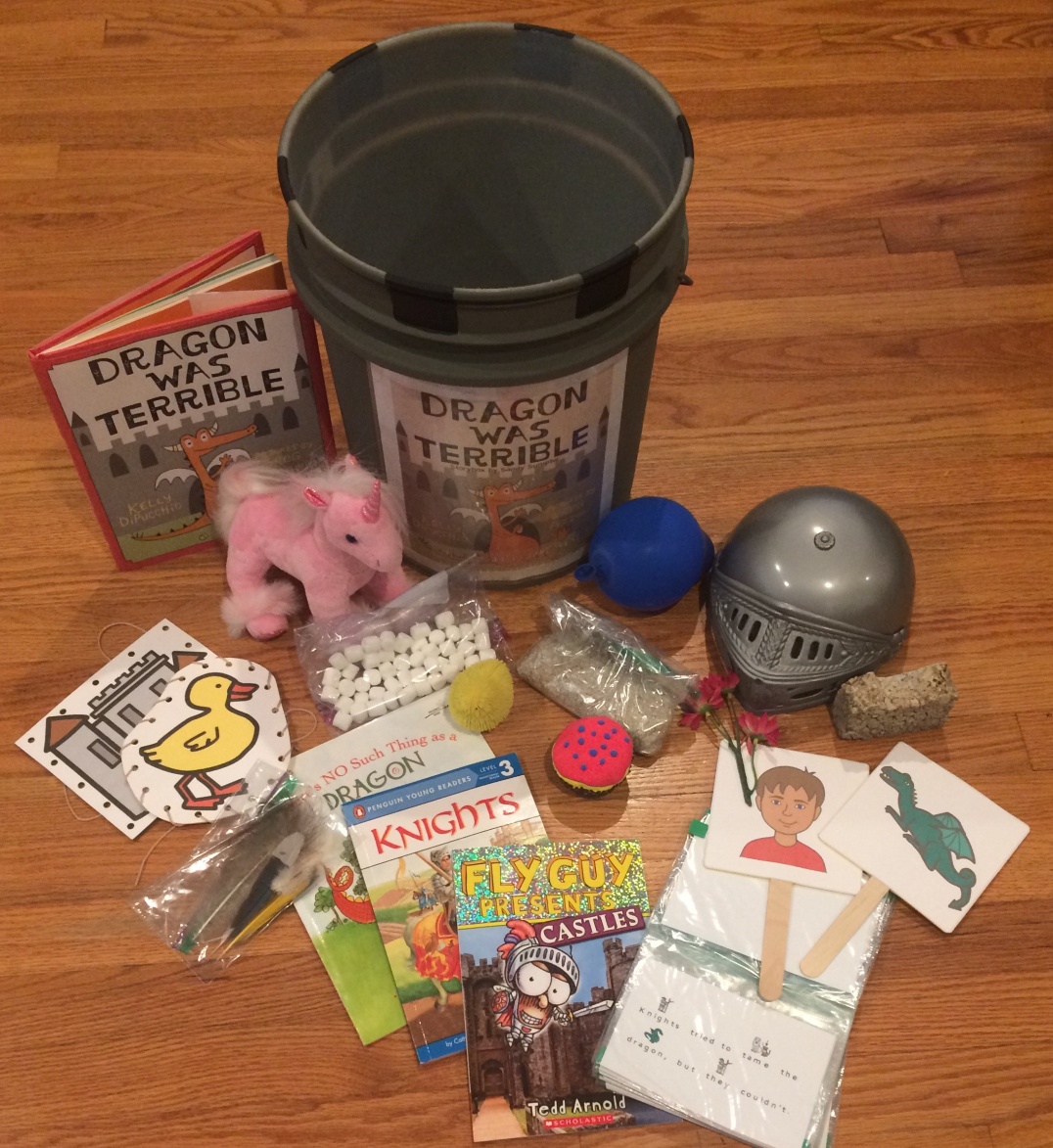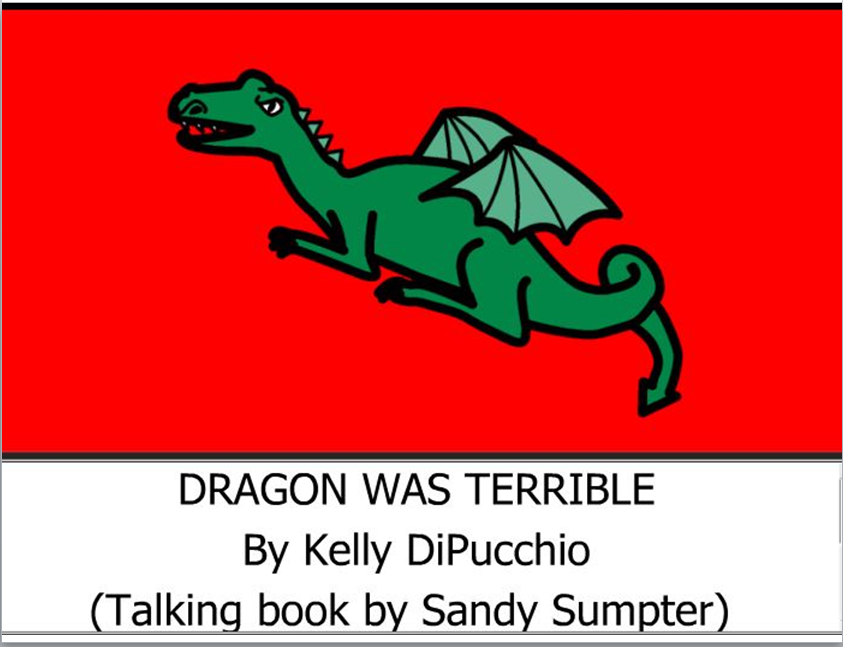"Dragon Was Terrible": Accessible Ideas for Children with Multiple Disabilities
Submitted by Sandy Sumpter on Apr 28, 2017
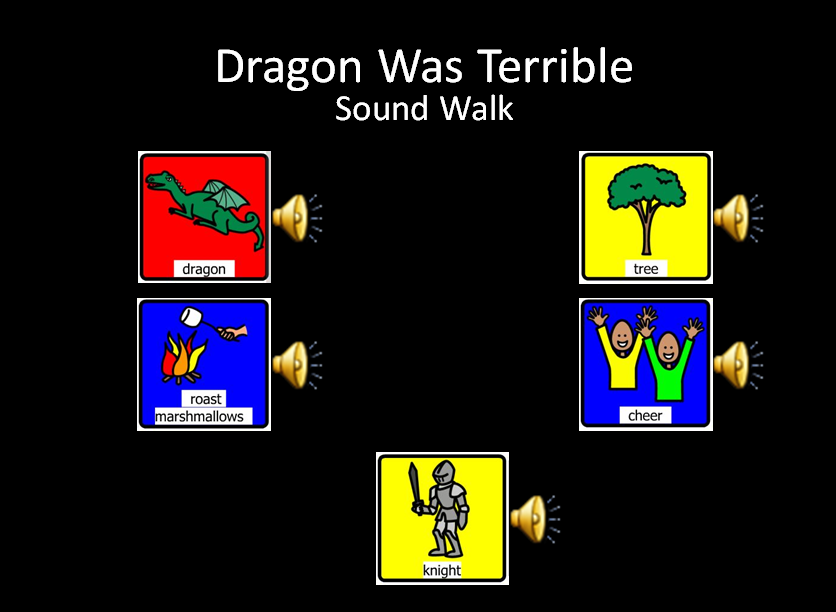
As part of the graduate coursework for Visual Impairments and Multiple Disabilities in the Teacher Preparation Program in Visual Impairments at the University of Kentucky, students were asked to complete four projects: Story Box, Picture Communication Symbols for Story Box, Tactile Communication Symbols, and Talking Book Project.
We are sharing them on Paths to Literacy and hope that others will use them! Please add your comments at the bottom of the page. This project is based on Dragon Was Terrible by Kelly DiPucchio.
Introduction:
Title of book: Dragon Was Terrible
Author: Kelly DiPucchio
Illustrator: Greg Pizzoli
I chose this book because it was a story I had never heard before, and I wanted to do a storybox for a book that wasn't very well known. I think it is a fun story that can be read to students of all ages. It also encourages reading, because the dragon was tamed by a boy reading a book to him. I would recommend this book to all students, not only students with visual impairments and/or multiple disabilities.
Storybox:
I created this storybox to include tangible items, tactile communication cards, a "baggie book" containing a modified version of the story using picture symbols and large print, some character manipulatives to use while reading the story aloud, a lacing activity for fine motor skills, picture bingo cards, and a picture memory game. I also included some additional books to go with the overall theme (an informational picture book about knights, an informational picture book about castles, and another picture book called There's No Such Thing as a Dragon by Jack Kent). All of these items are stored in a bucket that is made to look like a small castle turret.
Some background knowledge that students may need to have in order to understand all of the items in the storybox would be:
- What a unicorn is;
- What knights used to wear & why (helmet, shield, armor) - The included book about knights can be used to find this information.
- That a duckling is a baby duck & that ducks have feathers;
- What a castle is - The book included about castles can be used to find this information.
- That it is not socially acceptable to be noisy in church
- What a king is/does
- What tree bark is
- What sand is
- What a marshmallow is
- What a balloon is
- What a cupcake is
- What flowers are
The tactile items included in this storybox are:
- life-size fake flowers (Dragon stomped on flowers.)
- a life-size "cupcake" made with model magic and a paper cupcake liner (Dragon spit on cupcakes.)
- sand in a baggie (Dragon threw sand.)
- a toy-size unicorn (Dragon stole candy from baby unicorns.)
- a child-size plastic knight's helmet (Knights tried to tame the dragon.)
- a toy-sized duckling (Dragon chased ducklings.)
- a palm-sized piece of block to represent the castle wall
- balloons (Dragon popped balloons.)
- a bag of real marshmallows (Dragon burned marshmallows.)
- feathers in a baggie to represent the feathers on ducks & ducklings
Ideas for implementation:
- Students can use the items to hold and explore before, during, and after reading.
- Students could use the items to sequence or re-tell the story.
- Students could use the items to compare/contrast textures.
- Students could use the items to answer comprehension questions about the story.
- Students could use the items to make up their own story
Tactile Symbols:
I used Tactile Connections cards from APH to create tactile communication symbols. Each card has Velcro on the back so that it can be used with an All-In-One Board or other Velcro-friendly surface. The tactile communication cards represent people, animals, items, and places from the book. I also created some that contain core vocabulary. Each card contains the name of what each item represents in both print and braille. The cards are stored in a metal box made to look like a castle.
The tactile symbols I created are:
- a fake life-size flower (Dragon stomped on flowers.)
- a piece of a cupcake wrapper (Dragon spit on cupcakes.)
- a tiny book (Dragon scribbled in books.)
- sand glued to the card (Dragon threw sand.)
- a small horn of a unicorn made from model magic (Dragon stole candy from baby unicorns.)
- a small metal shield to represent the Knights
- feathers to represent the ducklings
- a piece of block to represent the castle walls
- a life-size "marshmallow" made from model magic (Dragon burned marshmallows.)
- an uninflated balloon (Dragon popped birthday balloons.)
- a piece of tree bark (The boy & Dragon sat under a tree.)
- a piece of peppermint candy (Dragon stole candy from baby unicorns.)
- core vocabulary (no/don't, yes, choose, same, different, sad, happy)
Ideas for implementation: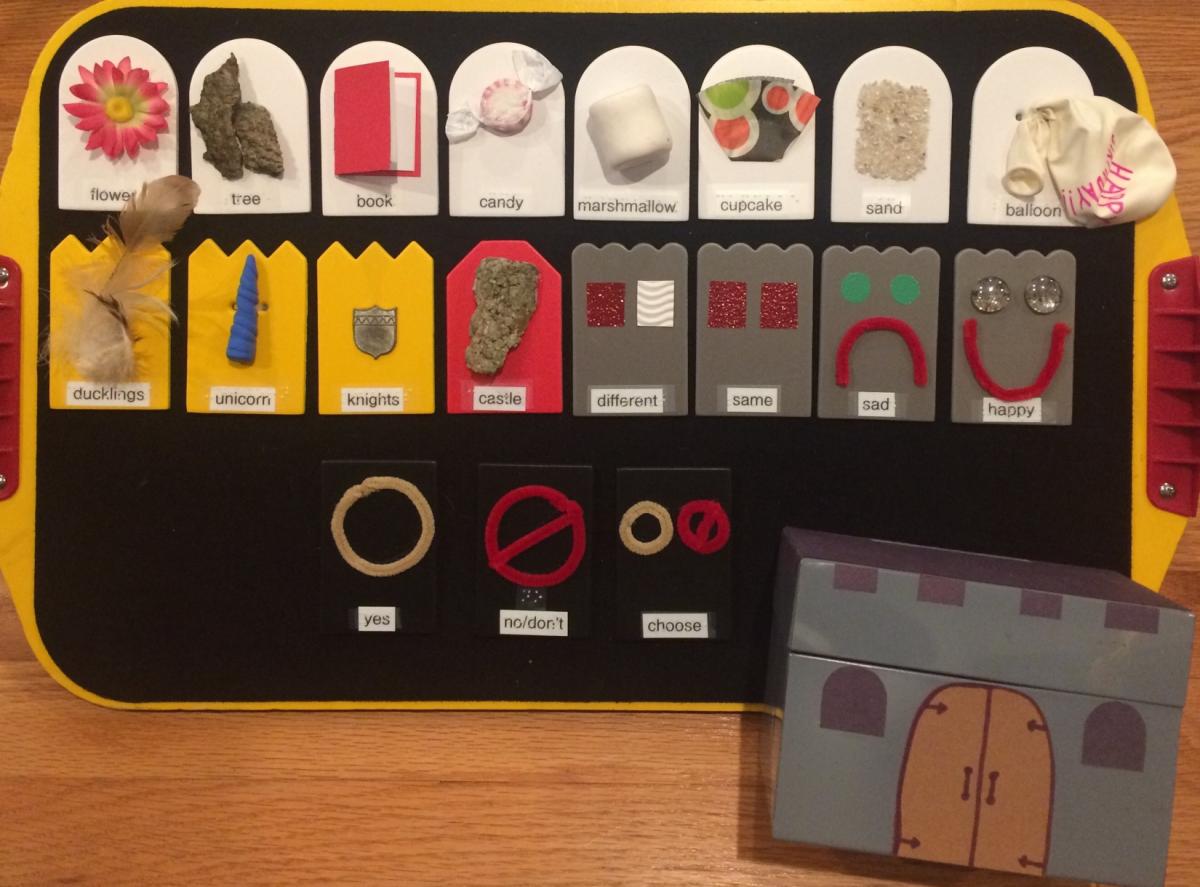
- to hold and explore before, during, and after reading;
- to re-tell the story;
- to make up their own story;
- sorting activities
- matching activities
- sequencing activities
Comprehension questions to answer using the tactile communication cards:
- What did Dragon stomp on?
- What did Dragon spit on?
- What did dragon throw?
- Fill in the blanks: Dragon took ______ from baby _________.
- Who tried to tame the dragon first?
- Who did Dragon chase?
- Fill in the blank: Dragon TP'd the __________.
- What did Dragon burn?
- Where did the boy and Dragon sit when reading the boy's story?
- What did the boy use to tame the dragon?
Picture Symbols:
I used Boardmaker Online to create picture communication symbols to also use with the book. The picture communication cards represent people, animals, items, places, actions, and feelings from the book. I also created some core vocabulary picture symbols.
Ideas for Implementation: 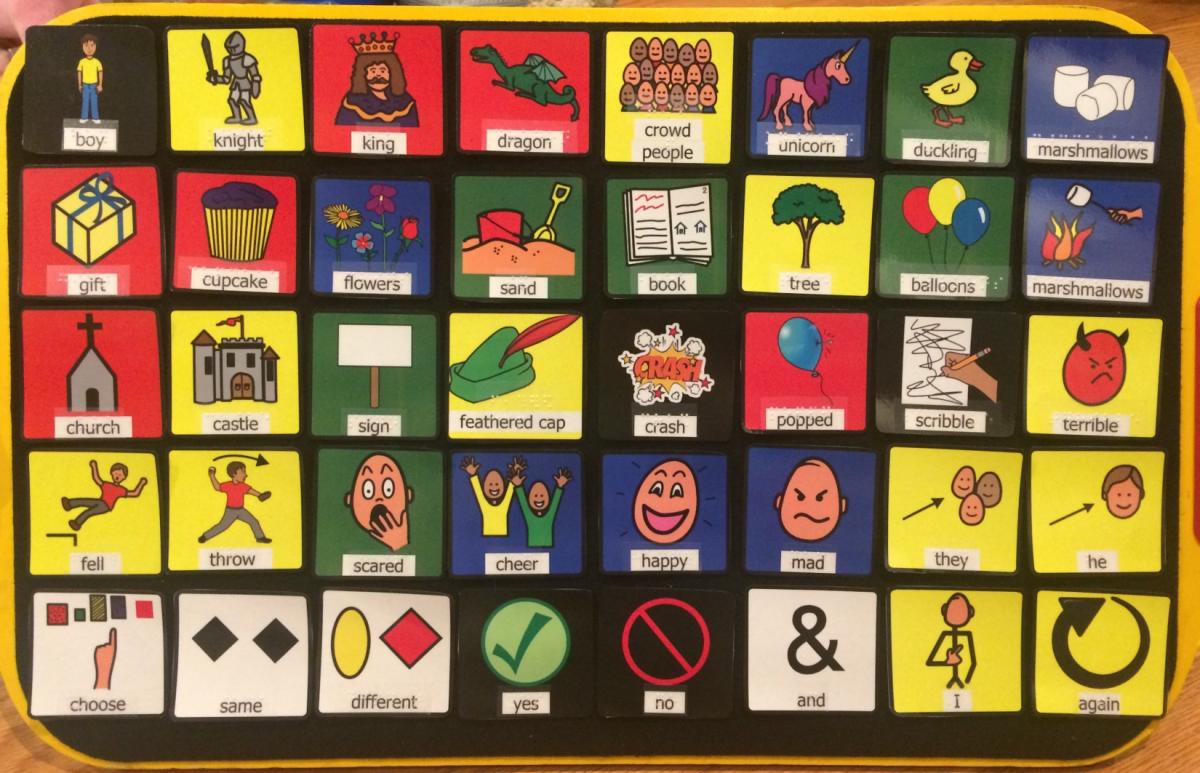
- re-tell the story
- make up your own story
- sorting activities
- matching activities
- sequencing activities
- magnetic MEMORY game
- picture BINGO game
Comprehension questions to answer using the picture communication cards:
- Who is the main character in this story?
- Fill in the blank: Dragon was _____________.
- What did the boy wear on his head?
- Show me 2 things that are fantasy and 2 things that are real.
- How did the King feel about the terrible dragon?
- What terrible thing did Dragon do to books?
- What did the King promise to whoever tamed the dragon?
- Who finally tamed the dragon?
- What did the people do when the dragon was tamed?
- How did the boy & the dragon feel at the end of the story?
Talking Book Project:
This Talking Book was created using PowerPoint and Boardmaker online. I used the same pictures in this talking book that I used for the picture communication symbols. The first page of the talking book is a "sound walk" that contains sounds used to represent some of the things in the book The sounds from the sound walk are also embedded in some of the corresponding pages of the book. The original text has been simplified, and is automatically read aloud. I also added the repetitive phrase "Dragon was terrible", so that it would be accessible to a student using a recorded switch. The student could hit the switch to say "Dragon was terrible" any time the phrase appears in the book. Additionally, a student could use a different switch to turn the "pages" of the book.


